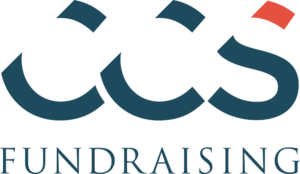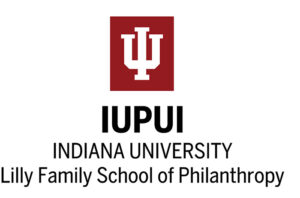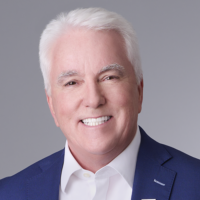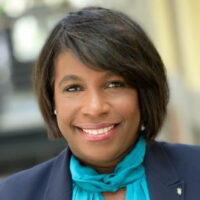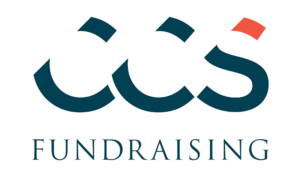The journey to a donor’s first gift to your healthcare institution starts before they ever become a patient. Once a person schedules their first appointment or has an unexpected visit to the hospital, how are you embedding giving and the importance of their support into their overall experience as a patient?
In the 2023 CCS Philanthropy Pulse report, 143 healthcare institutions ranked more than 12 fundraising challenges they face today. Donor acquisition has remained one of the top-ranked challenges of the last few years, but in 2023, more people ranked it than ever before. Why has this remained an issue for several years in a row?
Healthcare’s landscape has evolved at a rapid pace since the global COVID-19 pandemic in 2020. We have seen growing shifts across multiple dimensions, from community hospitals to health system acquisitions, in-person doctor visits to telehealth appointments, hard copy patient records to digital patient feeds, and innovations in health informatics. Healthcare institutions have the unique benefit of constantly acquiring new patients and communities to serve, all of whom have the potential to become donors. As healthcare evolves, the patient experience adapts— our approach to grateful patient donor acquisition should too.
UNDERSTAND YOUR PATIENT AND DONOR POPULATIONS
Just as a prospect research team or gift officer would research a prospect before a meeting, you can maximize engagement strategies and increase the likelihood of reciprocity by leveraging data insights to understand your patient population. This can be as simple as researching the average household income or home value in your patient’s geographical catchment. Does it vary across counties? How does your patient population vary in age? Gender? How many of your patients are on government assistance? While many of these details are searchable online, building a relationship with your hospital’s marketing or patient experience team will enable you to leverage their expert insights.
Similarly, assessing your current patient donor population and evaluating their past engagement will provide context for what has been most successful in generating a first gift in the past. Was it a particular solicitation? A physician referral? A website or social media post? These insights can ensure that you maximize the strategies that have worked in the past and prioritize opportunities for the patient population you serve.
MAKE GIVING VISIBLE…
…Not just with names on buildings, but through the fabric of your hospital’s culture. This does not mean placing signs throughout the lobby that read “MAKE A GIFT!” Rather:
- Embed ways a patient can say “thank you” in their welcome packets or post-care surveys. Patients frequently want to say, “thank you” and don’t know the best way. Make it easy to know how.
- Promote stories of impact for gifts of all sizes. Embedding stories of how giving has impacted a patient, a physician or nurse, a hospital program, a breakthrough in science, or more, will set a precedence for the value the organization and patients place on all levels of philanthropic support.
- Educate hospital professionals on the importance of giving and its role in their work, division, hospital, and the system overall. They serve as the frontline fundraiser before a patient connects with the foundation and can be your strongest partners and champions for giving.
DEMONSTRATE GIVING IS A RESOURCE For ALL
Individuals are more likely to support an organization or cause when they understand its impact on others, including themselves. Before a patient receives a solicitation from the hospital foundation, use your communications to emphasize 1) the role that giving plays in making the services, programs, and breakthroughs possible and 2) the benefits that a donor can experience based on how they give. Illustrate or prove the valuable resource your healthcare organization is to them as an individual and the community at large.
BE TIMELY
Data shows 5 communications within the first 90 to 120 days post-hospital visit (one direct mail and four emails) increases the likelihood of a gift on the 2nd or 3rd communication (between 30 – 60 days). Most importantly, insights from the Woodmark Summit indicate a patient or patient family is 76% more likely to make a gift if they receive a communication within the first 30 days post-hospital visit or care.
Patient privacy is most important, so it’s essential to work with your hospital staff to ensure any data you receive is HIPAA-compliant. Access to your hospital’s HIPAA-compliant patient data is an optimal opportunity to implement an automated patient data feed that allows the flexibility to automate and optimize your acquisition communications. This is not the case for all hospitals, in which case you can still leverage communications monthly based on the data you’re able to receive. Without access to patient data, you should plan and collaborate on a strategy forward with your hospital partners, ensuring you are substantively engaging potential donors for future sustainable support.
TEST AND EVALUATE YOUR COMMUNICATION STRATEGIES
Whether you’re communicating with recent patients or your catchment population at large, every communication should include an A/B test. It deepens your understanding of your potential donor community by investigating how they interact with your email or direct mail piece. With this test, you can answer questions like: Which links did they click? What call to action or gift string generated a higher gift? What subject line yielded a higher open rate? By regularly evaluating these results, you will be able to enhance future communications and increase the likelihood of a first gift.
A patient’s journey to giving back starts before they step foot in your hospital or doctor’s office. Building a program focusing on the patient journey and donor benefits maximizes the likelihood of their philanthropic investment, enhances overall engagement with your healthcare organization, and optimizes your ability to request and secure major, principal, and planned gifts. A culture of philanthropy that centers the patient-donor and highlights the potential in major gifts of assets, illustrates the extraordinary work you do, and collective impact that is possible when everyone participates!
Part II of our Building a Patient-Centric Journey to Giving series will explore how to implement data-driven communication journeys that lead to donor conversion and maximize your pipeline towards major, principal, and planned giving potential. Stay tuned!
More Insights
Your Guide to Finding, Engaging, and Retaining the Next Donor Generation
The future of philanthropy revolves around engaging our next generation of donors—Generation Z and Millennials. Understanding how to attract, retain, and grow your young professional pipeline will ensure long-term sustainability for your organization.
How to Identify New Major Gift Prospects With Predictive Modeling
CCS’s Senior Data Scientist John Sammis explains how your nonprofit can use predictive modeling to unearth new fundraising potential in your donor database.
